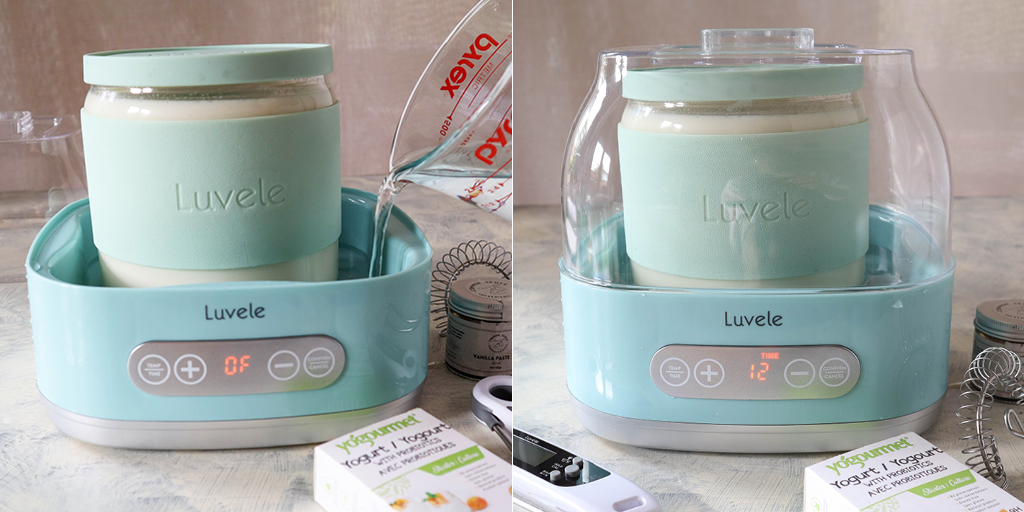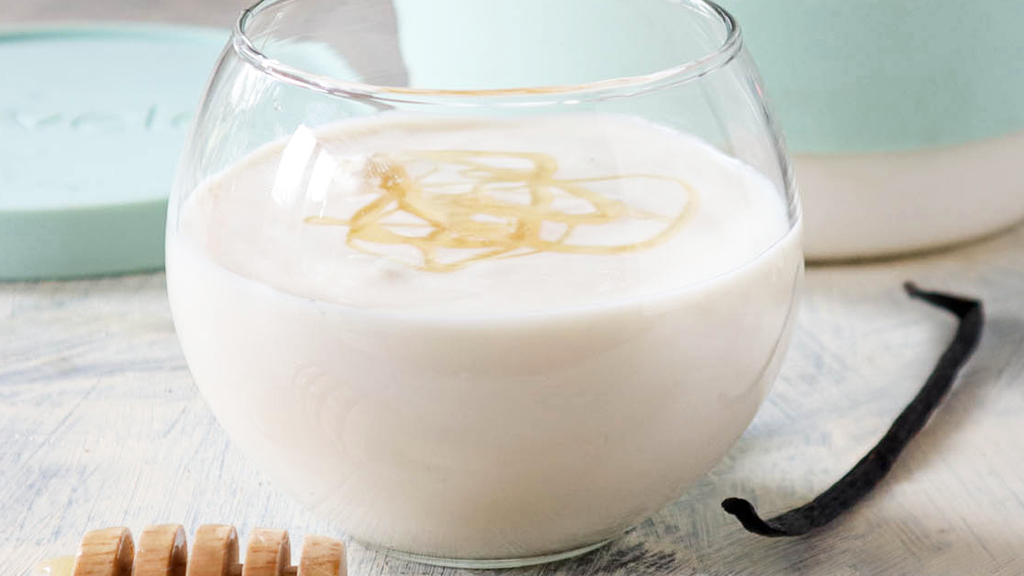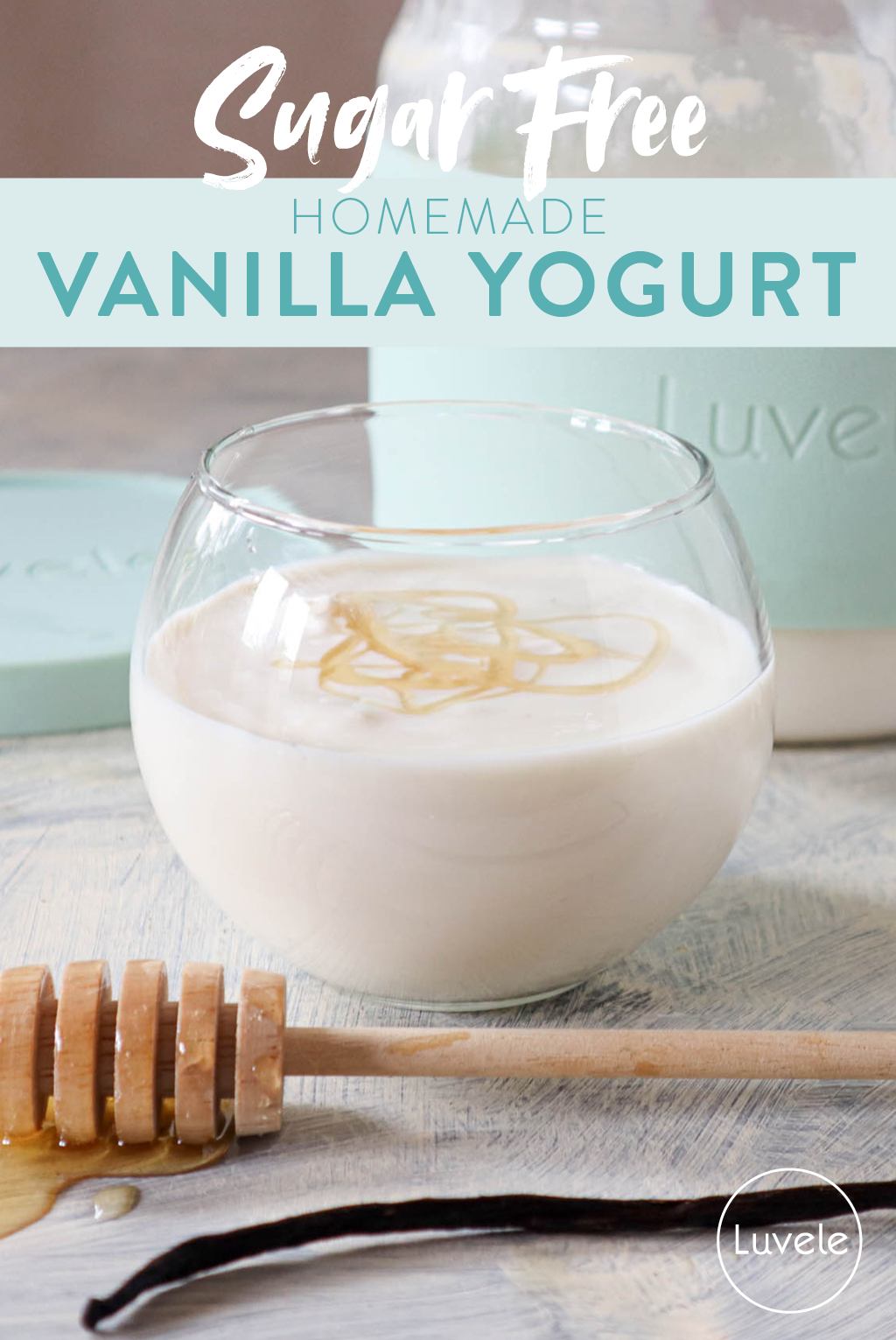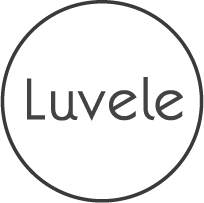Your Cart is Empty

Homemade vanilla yogurt that is sugar free
Barb Hodgens
Barb Hodgens loves to cook with alternative, healthy whole food ingredients, with a focus on gut health. Barb has overcome her own gut health issues through healthy eating. Share your ideas, comments and photos at the end of this post :)

Gut loving, creamy, dreamy vanilla yogurt.
Vanilla yogurt is an all-time family favourite. Kids generally prefer it and why not? It’s deliciously, sweet, creamy and desert-like. If you look closely at the ingredient list though, store-bought vanilla yogurt is not always that healthy. Commercial vanilla yogurt is sweetened with sugar, rarely contains real vanilla and has stabilisers to ensure that dreamy dessert-like creaminess.
At Luvele we luv creating healthy homemade recipe alternatives that taste every bit as good as anything store-bought, but without the nasties. If you own a Luvele yogurt maker, you’ll already know how incredibly easy it is to make yogurt that surpasses anything you can buy. And you’ll probably have felt the difference in your body. Homemade yogurt is full of good gut bacteria. Many customers tell us that homemade yogurt noticeably improves their digestion.
Given that store-bought vanilla yogurt is loaded with sugar, we thought that it might be impossible to replicate the flavour with a refined sugar free alternative. We trialled honey, maple syrup and coconut sugar as sweeteners and found that honey tasted the most authentic. Our kid critics also rated it highest.
Our homemade vanilla yogurt is made with pure ingredients and doesn’t require any additional thickeners. It’s completely free from artificial flavouring, additives and sugar. It's smooth, thick and creamy with gorgeous tiny flecks of vanilla bean. It actually tastes a little like custard, but it’s not overly sweet and has a hint of tanginess – so you still know you’re eating yogurt. Try it. You’re sure to love it.

YOUR VANILLA OPTIONS
When it comes to vanilla, there are 3 main options for making yogurt: vanilla bean pods, vanilla paste, or pure vanilla extract. Note: We don’t recommend vanilla essence which can either be imitation vanilla or a highly concentrated form of extract.
Vanilla beans are a waxy dark brown pod filled with thousands of tiny brown flavourful specks that smell highly fragrant. Pods have a short shelf life, are the most expensive option and can be difficult to find in some regions.
Pure vanilla extract is a liquid made from macerating vanilla beans in a mixture of alcohol and water. Extract does not have black seeds and is the most affordable type of vanilla.
Vanilla paste is a blend of the scraped-out vanilla pod seeds and vanilla extract. Vanilla paste is sold in a jar and contains flecks from the pod and has a more intense flavour than extract. It is a great option if you can’t find vanilla bean pods or you feel like the pods are too expensive. Vanilla paste is also expensive, but a jar lasts a long time and will make many tubs of homemade vanilla yogurt.

HOW TO OPEN A VANILLA BEAN POD
To open a pod, place the pod on a cutting board flat side down. Slice down the centre with a sharp knife. Slightly pull apart the pod, then run the blunt side of the knife down the inside to scrape out the seeds. Add the seeds and the pod to the milk before heating.
TIPS & TROUBLESHOOTING
- Use our honey and vanilla quantities as a guide and feel free to adjust to suit your taste preference the next time you make it. Altering these quantities won’t affect your yogurt.
- To ensure the thickest, tub-set yogurt possible, we also included dry milk powder. Adding dry milk powder is optional. If you choose to leave it out, we still recommend heating and holding the milk at 82° C (180° F) for up to 10 minutes.
- We recommend using homogenised milk for vanilla yogurt. Yogurt made using unhomogenised milk, will end up with a layer of cream on top. This is delicious with traditional yogurt but too rich with vanilla. The vanilla bean seeds also set in the cream and make the top of the yogurt appear grey. We don't won't you mistaking the seeds for mould!
- At the end of the fermentation most of the vanilla beans settle at the bottom of the yogurt. After chilling, stirring them through the yogurt is optional.
- Vanilla yogurt can be fermented for 12-24 hours. We found fermenting for 24 hours resulted in a firmer set yogurt using Yogourmet starter culture. A shorter fermentation time will produce a sweeter yogurt though. Experiment to find your preferred taste and texture.
PREPARATION
Before you begin it is important to sterilise the yogurt making glass jar, lid and any utensils you use, in hot water. The danger of not sterilising is that other bacteria may overpower your starter culture and affect the quality of your yogurt.




Homemade vanilla yogurt that is sugar free
Luvele
Rated 3.3 stars by 7 users
Vanilla yogurt is an all-time family favourite. Kids generally prefer it and why not? It’s deliciously, sweet, creamy and desert-like. If you look closely at the ingredient list though, store-bought vanilla yogurt is not always that healthy. Commercial vanilla yogurt is sweetened with sugar, rarely contains real vanilla and has stabilisers to ensure that dreamy dessert-like creaminess.
Ingredients
- To keep our homemade vanilla yogurt method accessible to everyone we chose to use vanilla bean paste in our step by step method, explain how to use pods or extract also. This recipe makes 1 litre of vanilla yogurt. Double the milk, dry milk powder, honey and vanilla for a larger batch.
- 1 litre of homogenised milk
- 1/3 cup dry milk powder (optional)
- Vanilla (2 teaspoons of vanilla paste, 3 teaspoons of vanilla extract or 1 vanilla bean pod)
- ¼ cup honey
- Yogurt starter culture (we used Yogourmet)
Directions
Measure quantity of milk
Pour the milk into a large, clean saucepan.
Add dry milk powder
Whisk in the dry milk powder. The lumps of dry milk will dissolve while heating.
Vanilla bean pod (optional)
If you are using a vanilla bean pod, add it to the milk now. Use the scraped seeds and the pod. (if using paste or extract, add it in step 6)
Heat and hold the milk at 82° C (180° F)
- Stir the milk while it is heating so that the dry milk powder does not scorch on the bottom of the saucepan.
- Use a thermometer to gauge the temperature. As you become more confident with heating milk to make yogurt you will be able to judge when the milk is nearing 82° C (180°F) because it will begin to swell.
- Hold the heat at this temperature for anywhere between 2 - 10 minutes. The longer the better. Holding the milk at this high temperature denatures the milk proteins which thickens the yogurt. Tip: It can be a challenge to hold the milk at a high temperature for so long. Don’t get too caught up on the precise temperature. If the milk accidentally simmers briefly, don’t panic – reduce the heat and continue. Use a wok ring (or something similar) to create a distance between the flame and pot or use a double boiler pot filled with boiling water.
Cover the milk & let cool to below 42° C (107° F)
It is fine if the milk cools down well below 42° or even goes cold, it just mustn't be too hot. Temperatures above 43° C will kill the starter culture. You can actively cool it by filling a sink, or bowl with cold water and setting the pot of heated milk in the cold water. As the milk cools a layer of skin will form on top. Leaving this on does not produce lumpy yoghurt.
Honey and vanilla
If a vanilla bean pod was added to the milk before heating, remove it now. Stir in the honey and vanilla extract or paste into the milk at any time while it is cooling.
Add the starter culture and gently whisk it in.
Tear open one packet of Yogurtmet starter culture and pour it into the milk while whisking so that the grains of culture are evenly dispersed.
Secure the lid on the yogurt jar.
Then place the glass yogurt jar into your yogurt maker.
Pour water slowly into the base.
The water must not be filled over the ‘tall line’ indicated on the inside wall of the maker.
Place the cover lid on top.
The milk is now ready to begin fermentation.
Set the time & temperature.
Use the digital control panel to set the temperature to 38° C (100° F), the time to between 12 and 24-hours and then press ‘confirm’ to begin incubation. A longer fermentation will result in a firmer and tarter tasting yogurt.
After 12 - 24 hours the fermentation is complete.
Condensation will have collected under the cover lid. Please take care removing it and allow the water to drip into the water bath, instead of your bench! Switch the yogurt maker off and remove the yogurt jar. Straight from the maker the yogurt will be runny and warm.
Place the jar in the fridge for at least 6 hours to chill and set.
Be gentle with the warm yogurt and don’t stir it or else it won’t set in a perfect white mass.
Your vanilla yogurt is now ready to eat.
WHEN YOU TRY OUR HOMEMADE VANILLA YOGURT, WE’D LOVE TO HEAR BACK FROM YOU.
Recipe Video
PIN THIS RECIPE


Homemade vanilla yogurt that is sugar free

Gut loving, creamy, dreamy vanilla yogurt.
Vanilla yogurt is an all-time family favourite. Kids generally prefer it and why not? It’s deliciously, sweet, creamy and desert-like. If you look closely at the ingredient list though, store-bought vanilla yogurt is not always that healthy. Commercial vanilla yogurt is sweetened with sugar, rarely contains real vanilla and has stabilisers to ensure that dreamy dessert-like creaminess.
At Luvele we luv creating healthy homemade recipe alternatives that taste every bit as good as anything store-bought, but without the nasties. If you own a Luvele yogurt maker, you’ll already know how incredibly easy it is to make yogurt that surpasses anything you can buy. And you’ll probably have felt the difference in your body. Homemade yogurt is full of good gut bacteria. Many customers tell us that homemade yogurt noticeably improves their digestion.
Given that store-bought vanilla yogurt is loaded with sugar, we thought that it might be impossible to replicate the flavour with a refined sugar free alternative. We trialled honey, maple syrup and coconut sugar as sweeteners and found that honey tasted the most authentic. Our kid critics also rated it highest.
Our homemade vanilla yogurt is made with pure ingredients and doesn’t require any additional thickeners. It’s completely free from artificial flavouring, additives and sugar. It's smooth, thick and creamy with gorgeous tiny flecks of vanilla bean. It actually tastes a little like custard, but it’s not overly sweet and has a hint of tanginess – so you still know you’re eating yogurt. Try it. You’re sure to love it.

YOUR VANILLA OPTIONS
When it comes to vanilla, there are 3 main options for making yogurt: vanilla bean pods, vanilla paste, or pure vanilla extract. Note: We don’t recommend vanilla essence which can either be imitation vanilla or a highly concentrated form of extract.
Vanilla beans are a waxy dark brown pod filled with thousands of tiny brown flavourful specks that smell highly fragrant. Pods have a short shelf life, are the most expensive option and can be difficult to find in some regions.
Pure vanilla extract is a liquid made from macerating vanilla beans in a mixture of alcohol and water. Extract does not have black seeds and is the most affordable type of vanilla.
Vanilla paste is a blend of the scraped-out vanilla pod seeds and vanilla extract. Vanilla paste is sold in a jar and contains flecks from the pod and has a more intense flavour than extract. It is a great option if you can’t find vanilla bean pods or you feel like the pods are too expensive. Vanilla paste is also expensive, but a jar lasts a long time and will make many tubs of homemade vanilla yogurt.

HOW TO OPEN A VANILLA BEAN POD
To open a pod, place the pod on a cutting board flat side down. Slice down the centre with a sharp knife. Slightly pull apart the pod, then run the blunt side of the knife down the inside to scrape out the seeds. Add the seeds and the pod to the milk before heating.
TIPS & TROUBLESHOOTING
- Use our honey and vanilla quantities as a guide and feel free to adjust to suit your taste preference the next time you make it. Altering these quantities won’t affect your yogurt.
- To ensure the thickest, tub-set yogurt possible, we also included dry milk powder. Adding dry milk powder is optional. If you choose to leave it out, we still recommend heating and holding the milk at 82° C (180° F) for up to 10 minutes.
- We recommend using homogenised milk for vanilla yogurt. Yogurt made using unhomogenised milk, will end up with a layer of cream on top. This is delicious with traditional yogurt but too rich with vanilla. The vanilla bean seeds also set in the cream and make the top of the yogurt appear grey. We don't won't you mistaking the seeds for mould!
- At the end of the fermentation most of the vanilla beans settle at the bottom of the yogurt. After chilling, stirring them through the yogurt is optional.
- Vanilla yogurt can be fermented for 12-24 hours. We found fermenting for 24 hours resulted in a firmer set yogurt using Yogourmet starter culture. A shorter fermentation time will produce a sweeter yogurt though. Experiment to find your preferred taste and texture.
PREPARATION
Before you begin it is important to sterilise the yogurt making glass jar, lid and any utensils you use, in hot water. The danger of not sterilising is that other bacteria may overpower your starter culture and affect the quality of your yogurt.



:recipekit:
PIN THIS RECIPE


Subscribe
Sign up to get the latest on sales, new releases and more …

